At seven he wanted to be Napoleon. At 10, he had labeled himself an impressionist artist. And by 25 he was already a master artist with ground-breaking styles and impeccable technique. He is Salvador Dali (1904-1989), one of the 20th century's most recognized artists, and he is currently the featured artist at the National Palace Museum.
Dali is often grouped with Joan Miro and Pablo Picasso as among the best three Spanish artists of the last century and the Palace Museum is privileged to have 38 oil paintings, 47 watercolor and drawings on loan from the Dali Theater Museum of Figueres, courtesy of the Gala Salvador Dali Foundation.
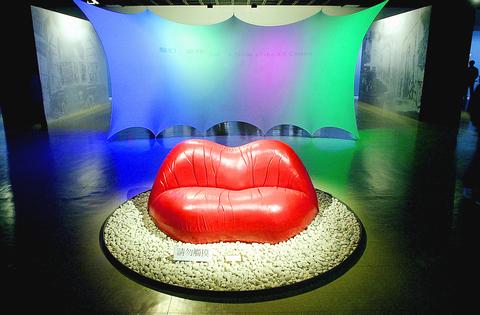
PHOTO: CHEN CHENG-CHANG, TAIPEI TIMES
While the palace museum is traditionally a venue to display classic Chinese and Asian art, museum director Du Cheng-sheng (
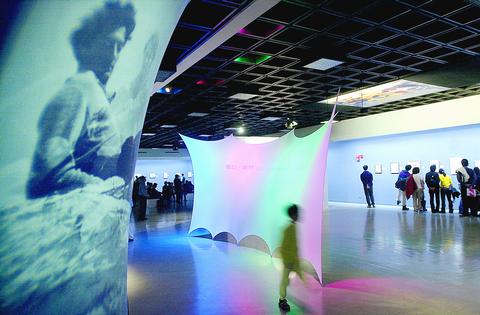
PHOTO: CHEN CHENG-CHANG, TAIPEI TIMES
Dali displays more provincialism in his works than his peers such as Picasso. He wrote art criticism in Catalan, the local language of his hometown Figueres, where he lived his whole life except for eight years spent in the US between 1940-1948. Despite the regional elements of his work, Dali came to be known internationally as a major artist.
The museum director said Dali's uniqueness lies in his exceptionally innovative ability to challenge custom and subverting traditional aesthetics and social values.
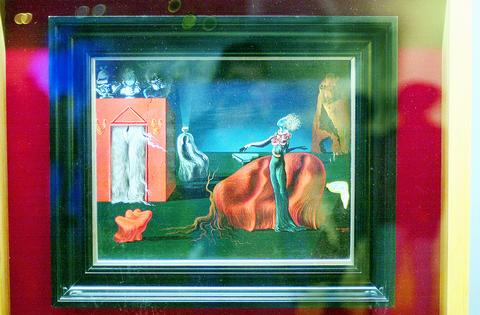
PHOTO: CHEN CHENG-CHANG, TAIPEI TIMES
Dali was, for a period, a leading member of the surrealist movement, which began in France in 1920 and was championed by the writer Andre Breton and the painter Rene Magritte. The style was characterized by its subversive investigations into the relationship between dreams and reality, inspired in large part by Freudian psychoanalysis. Dali became known for filling his canvasses with nightmarish, irrational dreamscapes that hint at the subconscious, and broach such taboo topics as sex and death.
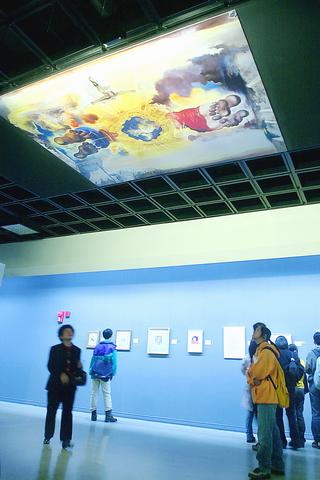
PHOTO: CHEN CHENG-CHANG, TAIPEI TIMES
Mostly known as a painter and sculptor, Dali also worked in experimental film and theater and even designed windows for department stores and jewelry. He is also one of the rare artists to make a fortune while alive, thanks mainly to his tireless self-promotion.
The Palace Museum exhibition includes a reproduction of one of Dali's classic installations -- a red, lush sofa in the shape of a woman's lips. The Dali Theater Museum of Figueres director Monsterat Agues, was actually so impressed by the Taiwan-made reproduction's semblance to the original that he asked to bring it back to Spain to replace the worn-out original.
Crowds are most likely to swarm to Dali's oil paintings, among them Singularidades (1935), one of the highlight pieces of the show. This piece -- which appears for the first time outside Spain -- contains Dali's signature melting clocks that have come to almost define the surrealist style.
In this painting, the melting clock -- inspired originally by melting Camembert cheese -- is placed to the right of a ghostly-looking woman on a red sofa. The image of the melting clock evokes the concept of a distortion of time, a concept which is typically viewed as rigid and linear. The woman, who lacks facial features, but has straw-like hair, appears to be singing. The image is horrifying, not unlike Dali's other depictions of women, who often have drawers extending from their bodies. The drawers are another form of Dali's exploration of psychology.
Willington Lee (
A series of seminars has been arranged to accompany the Dali show before it moves on to Shanghai in May. The first discussions is on Feb. 16 with psychiatrist Wang Hao-wei (
For more information on the seminars, call 273-6000 ext 1301 or 1302.

May 26 to June 1 When the Qing Dynasty first took control over many parts of Taiwan in 1684, it roughly continued the Kingdom of Tungning’s administrative borders (see below), setting up one prefecture and three counties. The actual area of control covered today’s Chiayi, Tainan and Kaohsiung. The administrative center was in Taiwan Prefecture, in today’s Tainan. But as Han settlement expanded and due to rebellions and other international incidents, the administrative units became more complex. By the time Taiwan became a province of the Qing in 1887, there were three prefectures, eleven counties, three subprefectures and one directly-administered prefecture, with

Taiwan Power Co (Taipower, 台電) and the New Taipei City Government in May last year agreed to allow the activation of a spent fuel storage facility for the Jinshan Nuclear Power Plant in Shihmen District (石門). The deal ended eleven years of legal wrangling. According to the Taipower announcement, the city government engaged in repeated delays, failing to approve water and soil conservation plans. Taipower said at the time that plans for another dry storage facility for the Guosheng Nuclear Power Plant in New Taipei City’s Wanli District (萬里) remained stuck in legal limbo. Later that year an agreement was reached

What does the Taiwan People’s Party (TPP) in the Huang Kuo-chang (黃國昌) era stand for? What sets it apart from their allies, the Chinese Nationalist Party (KMT)? With some shifts in tone and emphasis, the KMT’s stances have not changed significantly since the late 2000s and the era of former president Ma Ying-jeou (馬英九). The Democratic Progressive Party’s (DPP) current platform formed in the mid-2010s under the guidance of Tsai Ing-wen (蔡英文), and current President William Lai (賴清德) campaigned on continuity. Though their ideological stances may be a bit stale, they have the advantage of being broadly understood by the voters.
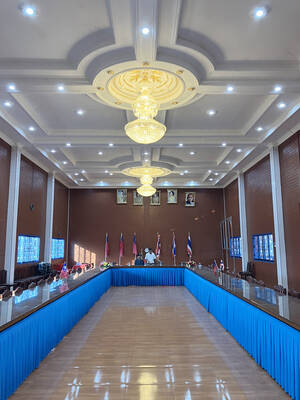
In a high-rise office building in Taipei’s government district, the primary agency for maintaining links to Thailand’s 108 Yunnan villages — which are home to a population of around 200,000 descendants of the Chinese Nationalist Party (KMT) armies stranded in Thailand following the Chinese Civil War — is the Overseas Community Affairs Council (OCAC). Established in China in 1926, the OCAC was born of a mandate to support Chinese education, culture and economic development in far flung Chinese diaspora communities, which, especially in southeast Asia, had underwritten the military insurgencies against the Qing Dynasty that led to the founding of